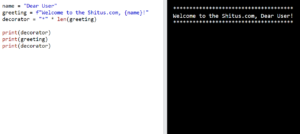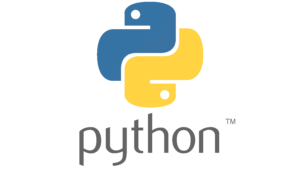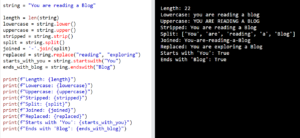In today’s world, it’s important for businesses to have a good marketing strategy. One way to do this is to use marketing funnels. A marketing funnel is a way to organize your marketing efforts so that you can reach your customers at the right time with the right message.
In this guide, we will teach you everything you need to know about marketing funnels, from the basics to advanced strategies. We will also give you some tips on how to create a successful marketing funnel for your business.
What is a Marketing Funnel?
A marketing funnel is a way to visualize the journey that potential customers take from being aware of your product or service to becoming a paying customer. It’s like a funnel, where you start with a large number of people at the top, and as they go through the funnel, they learn more about your product or service and eventually become a customer.
The Different Stages of a Marketing Funnel
A marketing funnel consists of several stages, each representing a different step in the customer’s journey:
1. Awareness Stage
The awareness stage is like the starting point of your marketing journey. Its main purpose is to let as many people as possible know about your brand, product, or service. To achieve this, you use different marketing techniques like social media, advertising, content marketing, search engine optimization (SEO), and public relations.
Think of it as introducing yourself to a large group of people who may have never heard of you before. You want to catch their attention and let them know that your offering exists. It’s all about making a memorable first impression and getting people interested in what you have to offer.
Example of awareness stage :
Coca-Cola is a company that almost everyone knows about. They have done a lot of things to make people aware of their brand. Coca-Cola uses social media, like Facebook and Instagram, to share interesting things about their products. They also show ads on TV and billboards and sponsor big events like the Olympics and World Cup.
The example of Red Bull’s marketing tactic with the branded trash cans is all about making people aware of their energy drink. Red Bull wanted to get attention and let people know about their product. They put special trash cans in popular places and used the slogan “Red Bull Gives You Wings” to catch people’s eye and make them think of energy and excitement. This type of marketing is commonly used in the beginning stage, where the goal is to create awareness and make people know about a brand or product.
You can often see Coca-Cola in movies and music videos too. They even change their packaging and ads to fit different countries and cultures. Because of all these efforts, Coca-Cola is known and recognized by people all over the world.
2. Interest Stage
Once people know about your brand, the next step is to get them interested in what you have to offer. You want to make them curious and want to learn more. To do this, you create interesting content like blog posts, videos, and cool pictures. You also interact with them on social media to keep them engaged. The goal is to provide helpful information and show them why your product or service is great. This way, you keep their interest alive and make them want to know more about what you have to offer.
Example of Interest Stage
In the interest stage, Coca-Cola creates compelling content to further engage its audience. They may publish blog posts about refreshing drink recipes, share fun videos of people enjoying Coca-Cola at parties or events, and create vibrant infographics highlighting the taste and variety of their products. They actively interact with their followers on social media by responding to comments, running contests, and sharing user-generated content. By consistently providing valuable and entertaining content, Coca-Cola keeps its audience interested and eager to learn more about their brand and products.
3. Consideration Stage
This is the stage when people are thinking about whether they should choose your product or service. They are comparing different options and deciding what’s best for them. Your job is to give them all the information they need, answer their questions, and address their concerns.
Showcasing testimonials and real-life examples of how your offering has helped others can be really helpful. Letting them try your product for free or demonstrating how it works can also make a big difference. The goal is to make them feel confident that your product or service is the right choice for them.
Example of Consideration Stage
In the consideration stage, Coca-Cola wants people to think about choosing their drink. They give more information about their different flavors and good ingredients. They share stories from happy customers who love drinking Coca-Cola and show how it brings people together. Coca-Cola may let people taste their drinks at events or offer special deals to make them want to choose Coca-Cola. The goal is to make people see Coca-Cola as the best option and make them excited to pick it over other drinks.
4. Conversion Stage
The conversion stage is when potential customers decide to buy or take a specific action. It’s the moment they become paying customers. To make this happen, you need to provide clear instructions and persuasive messages. You should also ensure a smooth and easy experience for them to complete the desired action, whether it’s making a purchase, signing up for a service, or subscribing to a newsletter. This stage is all about encouraging them to take the final step and successfully converting them into customers.
Example of Conversion Stage
One of the most famous examples of the conversion stage is Amazon. When you shop on Amazon, they make it really easy for you to buy things. They have buttons that say “Add to Cart” or “Buy Now” that tell you exactly what to do. They also show you information about the products, like descriptions and reviews, to help you make a decision.
When you’re ready to buy, they offer different ways to pay and a simple checkout process. Amazon has become really popular because they make it convenient for people to turn from potential customers into paying customers.
2nd example of Coco cola
When you see a Coca-Cola ad and decide you want to buy a bottle, Coca-Cola makes it easy for you to make the purchase. You can find Coca-Cola in almost every store, from supermarkets to convenience stores. They have eye-catching displays with cold drinks, making it tempting to grab one.
When you’re ready to buy, you simply pick up a bottle from the shelf and take it to the cashier. The price is clearly marked, and you can pay with cash, card, or even mobile payment methods. Coca-Cola has made the buying process straightforward and convenient, making it easy for you to become a paying customer and enjoy their refreshing beverages.
5. Loyalty Stage
After someone becomes a customer, the marketing journey continues. Now, the focus is on keeping that customer happy and coming back for more. To achieve this, it’s important to provide great customer support, follow through on promises, and give personalized experiences. By doing this, you can build a strong bond with your customers and make them feel valued. Happy customers are more likely to make repeat purchases, recommend your brand to others, and become loyal advocates. The loyalty/retention stage is about nurturing these relationships and ensuring customers stay satisfied and loyal in the long run.
Example of Loyalty stage
Starbucks Rewards is a loyalty program that rewards you for being a loyal customer. You earn points for every purchase you make at Starbucks, and you can redeem those points for free drinks or food items. Starbucks also sends you personalized offers and promotions based on your preferences and past purchases. The program also offers benefits like free birthday treats and the convenience of ordering ahead through the Starbucks mobile app.
By providing these incentives and personalized experiences, Starbucks aims to keep you coming back for their coffee and fostering long-term loyalty.
What are the key metrics of the marketing funnel?
- Conversion Rate: This tells you how many people go from one stage of the marketing process to the next. It shows how well your marketing is turning potential customers into actual customers.
- Customer Acquisition Cost (CAC): CAC is how much it costs your business to get a new customer. It includes things like advertising and marketing expenses. It helps you see if getting new customers is worth the money you spend.
- Customer Lifetime Value (CLV): CLV is how much a customer is worth to your business over their entire relationship with you. It looks at things like how often they buy from you and how long they stay as a customer. Higher CLV means more value for each customer.
- Return on Investment (ROI): ROI shows if your marketing is making you money. It compares the money you make from your marketing efforts with the money you spent on them. Positive ROI means your marketing is worth it.
Ref: Image by unsplash







